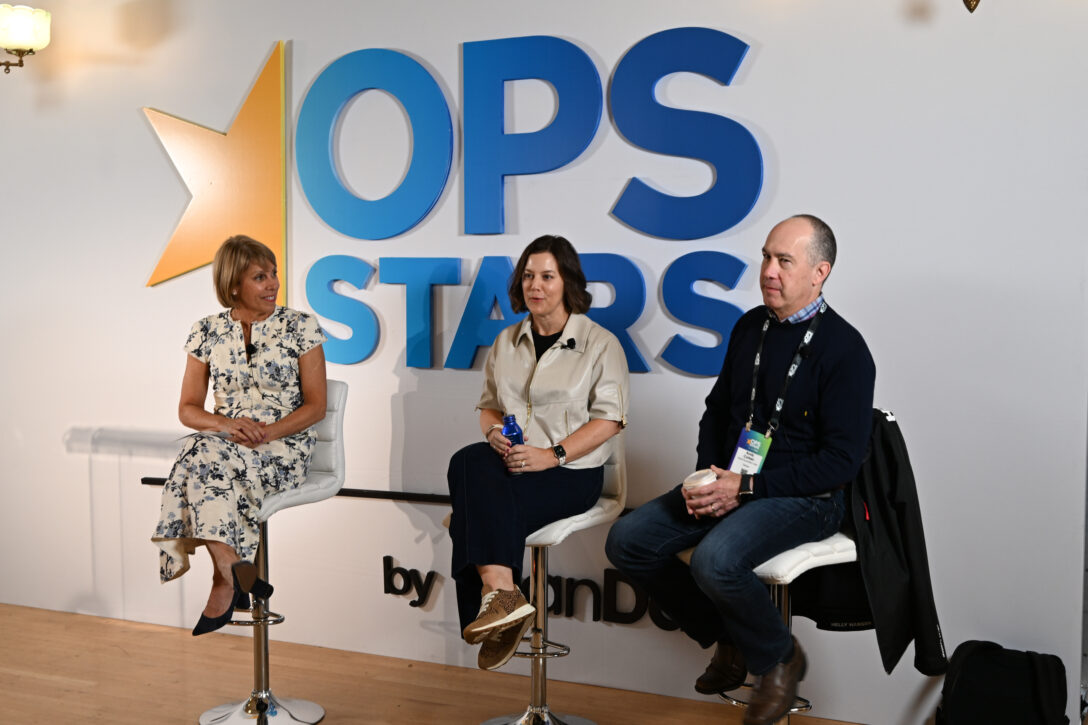Summary
This OpsStars session explores how GTM, RevOps, and Sales Ops leaders prepare board-ready narratives in a variety of scenarios. The conversation centers on owning plan‑versus‑actual performance and clarifying growth drivers across new business, expansion, and retention. It also highlights disciplined AI adoption through change management and measurable productivity gains.
Key Takeaways
- Start with plan versus actual. Own misses first, then explain causes and fixes before diving into details.
- Break growth into new business, expansion, and retention; be ready to discuss GDR and NRR implications and ownership.
- Keep metrics consistent quarter to quarter and make the story memorable. Put details in the appendix of your deck.
- Align your data, assumptions, and metrics with Finance, Product, and Marketing before the meeting; reconcile numbers with FP&A.
- Treat AI through three lenses: product, GTM acceleration, and operational efficiency. Pair tools with clear use cases, change management, and success metrics.

Speakers
Katy Keim — CEO, LeanData
Katy is a long‑time OpsStars attendee and now CEO, she leads LeanData’s vision for Intelligent GTM Orchestration.
Hilary Headlee — Advisory Leader, Insight Partners.
Hilary advises a 550‑company portfolio across R&D, go‑to‑market, and G&A. She is a former BizOps and RevOps leader at Alteryx, Mindbody, and Zoom.
Andy Cohen — Partner, World Innovation Lab and Angel Investor
Andy is a former founder and former head of sales (including at Bill.com). He now invests in SaaS companies, thus bringing both operator and board perspectives to the conversation.
What You’ll Learn
Q: What does a board expect to see first in a GTM update?
A: A concise plan‑versus‑actual view of revenue, followed by a clear explanation of misses and corrective actions. Detailed metrics live in the appendix; the main deck highlights three to four priorities.
Q: How should growth be framed so directors can probe effectively?
A: Segment results into new business, expansion, and retention, and explain ownership and levers for each. Be prepared to discuss health metrics like GDR and how pipeline, headcount plans, and budget assumptions connect to targets.
Q: What is a practical way to present AI progress to a board?
A: Report through three lenses: product capabilities, GTM acceleration, and operational efficiency. Then anchor these segments by defined use cases, change‑management plans, and early productivity or throughput gains.
Session Transcript
Katy Keim: Good morning everyone, and welcome to the OpsStars Executive Breakfast. I’m Katy Keim, CEO of LeanData. It’s wonderful to see so many familiar faces and new leaders here this morning. Today we’re talking about how to tell the go-to-market story that wins over boards and the C-suite.
We know that translating operational complexity into a clear, credible narrative for directors is one of the hardest parts of any GTM leader’s job. The goal of this conversation is to share real examples of how to own the story, especially when performance isn’t perfect, and to connect what happens inside the business to what the board truly needs to see.
I’m thrilled to be joined by Hilary Headlee and Andy Cohen, two executives who’ve sat on both sides of the table—as operators and as board members. Hilary, could you start by introducing yourself?
Hilary Headlee: Thanks, Katy. I’m Hilary Headlee, an Operating Executive at Insight Partners. I work with our portfolio companies on go-to-market, R&D, and general operations. We have about 550 companies in the portfolio, and my focus is helping them scale their revenue operations with clarity, discipline, and measurable results. Before Insight, I led BizOps and RevOps teams at Alteryx, Mindbody, and Zoom.
Andy Cohen: Good morning everyone. I’m Andy Cohen. I started my career in sales, later founded my own company, and eventually led the sales organization at Bill.com. Today I’m a venture capital investor focused on SaaS businesses. Having spent time both as an operator and now sitting on boards, I’ve seen how different the perspectives can be when reviewing company performance. I’m excited to discuss how to make that conversation productive and honest.
Katy Keim: Fantastic. Let’s dive in. When preparing for a board meeting, what’s the first thing each of you looks for in the GTM section of the deck?
Hilary Headlee: Start with plan versus actual. If something didn’t go as expected, acknowledge it immediately. Boards want transparency and accountability. Then talk about what you’re doing to fix it. After that, move to the wins and how those insights are being applied going forward.
Andy Cohen: I completely agree. What often builds credibility is showing the same metrics quarter after quarter, using a consistent structure. If every deck looks different, it’s hard for directors to track performance trends. Stick with a core metric set, and then add color in the appendix.
Katy Keim: That makes sense. How should GTM leaders frame growth when reporting to the board?
Hilary Headlee: Break it down into new business, expansion, and retention. Discuss where growth is coming from, what’s at risk, and what’s working. Many companies are now using gross dollar retention or net revenue retention as key indicators. Be ready to discuss what levers affect those metrics.
Andy Cohen: Right, and show how those categories align with company strategy. For example, if expansion is the growth engine, highlight what’s being done to drive more value for existing customers. Boards appreciate when GTM leaders explain growth using this structure.
Katy Keim: How do you recommend handling interlocks with other teams before the meeting?
Hilary Headlee: Alignment is essential. Before the board deck is finalized, reconcile the numbers with FP&A and make sure Product and Marketing are aligned on launch dates, campaigns, and messaging. When the story is consistent across functions, it shows maturity and control.
Andy Cohen: That alignment also prevents surprises. Nothing undermines confidence faster than different leaders quoting different numbers in the same meeting.
Katy Keim: Let’s shift to AI. Everyone is experimenting, but boards are asking for measurable progress. What’s a practical way to report on AI initiatives?
Hilary Headlee: I recommend three lenses. First, product—how AI is built into the product itself. Second, GTM acceleration—how teams use AI to increase speed to lead, improve conversion, or generate better insights. Third, operational efficiency—where AI automates workflows or reduces manual tasks. Pair each area with clear success metrics.
Andy Cohen: Agreed. Also, include a change management plan. The technology itself won’t deliver value without adoption. Boards want to know that training, governance, and measurement are in place.
Katy Keim: Excellent points. Before we wrap up, what’s one piece of advice you’d give to anyone presenting their GTM story to a board?
Hilary Headlee: Keep it simple and memorable. Directors review many decks, so focus on clarity. Use a few visuals to show progress, and move detailed data to the appendix.
Andy Cohen: Be confident but candid. Owning misses builds more trust than over-explaining them. The board values transparency and the plan for improvement.
Katy Keim: Perfect advice. Thank you both for joining and sharing such practical insight. And thanks to everyone here for being part of OpsStars 2025. This conversation is exactly what makes the community valuable—open, honest, and focused on helping each other succeed.
[End of Clean Transcript]









